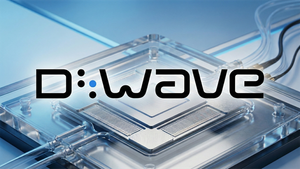SUNNYVALE, Calif., April 17, 2025 (GLOBE NEWSWIRE) -- Intuitive (NASDAQ: ISRG), a global leader in minimally invasive care and the pioneer of robotic-assisted surgery (RAS), today announced the publication of two studies showing how the availability of RAS helps enable access to high-quality care, improve patient outcomes, particularly in medical deserts, and contributes to the overall growth of minimally invasive care ultimately benefitting patients.
The studies, published in the Journal of the Society of Laparoscopic & Robotic Surgeons and Annals of Surgery Open, are part of broader research underway by Intuitive to evaluate the availability and impact of RAS. As a leader in minimally invasive care, Intuitive is committed to identifying gaps in patient access and collaborating with healthcare providers to help them expand access and measure outcomes through evidence generation.
Minimally Invasive Surgery Deserts: Is There a Role for Robotic Assisted Surgery?
The first study, titled “Minimally Invasive Surgery Deserts: Is There a Role for Robotic Assisted Surgery?” identified regions where patients lack access to high-quality MIS due to factors such as training availability, location, and/or hospital infrastructure. The study also examined how RAS can enable more widespread and efficient adoption of minimally invasive care.
“Minimally invasive surgery offers profound benefits for patients, from shorter recovery times to reduced postoperative complications, yet too many patients lack access due to barriers like surgeon training or hospital location,” said Intuitive’s Chief Medical Officer Myriam Curet, M.D. “This paper underscores the need for innovative solutions to give hospitals and surgeons more options to improve patient care and outcomes.”
Key findings from this article, authored by a multidisciplinary team including Intuitive, include:
- Defining MIS Deserts: A medical desert is an area where patients lack access to health services. There are multiple barriers to MIS access, and patients in these areas may undergo open surgery more often, missing out on the benefits of MIS.
- Identifying Barriers to MIS Access: Surgeon characteristics, including training, board certification, years of practice, and procedure volume, accounted for nearly two-thirds of variation in MIS use for colectomy. Patient sociodemographic characteristics accounted for nearly 30 percent, and hospital characteristics, such as rural or urban location, academic status, and procedure volume accounted for about 7 percent.
- Impact of Robotic-Assisted Surgery: Addressing surgeon training could result in significant improvement in MIS use. RAS offers surgeons a shorter learning curve compared to traditional laparoscopy, allowing clinicians to become proficient more quickly. Telementoring and remote surgical support could further extend the reach of experienced surgeons into underserved areas.
Rates of Minimally Invasive Surgery after Introduction of Robotic-Assisted Surgery for Common General Surgery Operations
Building on the previous study, “Rates of Minimally Invasive Surgery after Introduction of Robotic-Assisted Surgery for Common General Surgery Operations,” examined how the introduction of RAS has influenced rates of MIS in hospitals across the United States. The study also evaluated whether adopting RAS helped expand access to MIS across different demographics, including age, sex, race, ethnicity, and insurance status.
The study evaluated data from 408 U.S. hospitals between 2016 and 2022, focusing specifically on 153 hospitals that introduced RAS for common general surgeries such as cholecystectomy, hernia repair, and colorectal resection. The findings highlight the broader impact of RAS adoption on minimally invasive surgery rates:
- Higher MIS Adoption: Hospitals that implemented RAS saw MIS rates increase from 60.5% to 65.8%, a significantly greater rise than hospitals that did not introduce RAS (56.1% to 57.0%).
- Expanded Access Across Patient Populations: Patients aged 35 and older and those with Medicare or commercial insurance saw significant MIS rate increases, suggesting a broader reach of minimally invasive techniques.
- Consistent Gains Across Procedures: The greatest MIS gains in RAS hospitals were seen in hernia repairs and colorectal resections, where rates outpaced those in non-RAS hospitals.
Prior studies have debated whether the rise of RAS primarily shifts procedures from laparoscopy rather than expanding MIS access. This research adds to the body of evidence suggesting that, in many hospitals, the introduction of RAS contributes to overall MIS growth across populations rather than redistributing surgical methods by overcoming some of the barriers associated with laparoscopy, including ergonomic limitations and 2D visualization.
“These findings suggest that the introduction of robotic-assisted surgery is helping to expand patient access to minimally invasive techniques,” said Zhi Ven Fong, MD, MPH, DrPH, co-author, hepatobiliary and pancreas surgeon, and surgical oncologist, Division of Surgical Oncology and Endocrine Surgery, Mayo Clinic Arizona. “By removing some of the technical challenges of traditional laparoscopy, RAS has the potential to make minimally invasive surgery a more viable option for a broader range of patients.”
To date, more than 16 million patients have benefitted from minimally invasive care performed with Intuitive technologies including urology, gynecology, colorectal, general surgery, thoracic, and cardiac surgery procedures and has helped improve patient outcomes, ranging from shorter recovery times to reduced postoperative complications, depending on the procedure and individual patient characteristics.
For more information about Intuitive’s efforts to help advance greater access to care and specifically robotic-assisted surgery, visit www.intuitive.com.
References:
- Mitzman, Brian et al. “Minimally Invasive Surgery Deserts: Is There a Role for Robotic Assisted Surgery?.” JSLS : Journal of the Society of Laparoendoscopic Surgeons vol. 28,3 (2024): e2024.00039. doi:10.4293/JSLS.2024.00039
- Fong, Zhi Ven et al. “Rates of Minimally Invasive Surgery After Introduction of Robotic-Assisted Surgery for Common General Surgery Operations.” Annals of surgery open : perspectives of surgical history, education, and clinical approaches vol. 6,1 e546. 31 Jan. 2025, doi:10.1097/AS9.0000000000000546
Contact: Megan Elliott, Intuitive
Megan.elliott@intusurg.com
1-669-222-9899
About Intuitive
Intuitive (NASDAQ: ISRG), headquartered in Sunnyvale, California, is a global leader in minimally invasive care and the pioneer of robotic surgery. Our technologies include the da Vinci surgical system and the Ion endoluminal system. By uniting advanced systems, progressive learning, and value-enhancing services, we help physicians and their teams optimize care delivery to support the best outcomes possible. At Intuitive, we envision a future of care that is less invasive and profoundly better, where disease is identified early and treated quickly, so that patients can get back to what matters most.
About da Vinci Surgical Systems
There are several models of the da Vinci surgical system. The da Vinci surgical systems are designed to help surgeons perform minimally invasive surgery and offer surgeons high-definition 3D vision, a magnified view, and robotic and computer assistance. They use specialized instrumentation, including a miniaturized surgical camera and wristed instruments (i.e., scissors, scalpels, and forceps) that are designed to help with precise dissection and reconstruction deep inside the body.
For more information, please visit the company’s website at www.intuitive.com.
Important Safety Information
For product intended use and/or indications for use, risks, cautions, and warnings and full prescribing information, visit https://manuals.intuitivesurgical.com/market. For summary of the risks associated with surgery refer to www.intuitive.com/safety.







